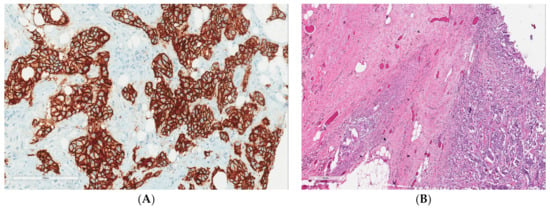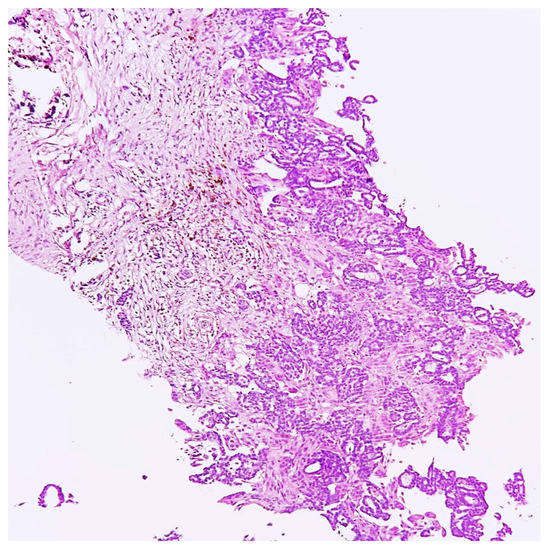Clinical Research in Oncology
A topical collection in Reports (ISSN 2571-841X).
Viewed by 7275
Share This Topical Collection
Editor
 Prof. Dr. Syed A. A. Rizvi
Prof. Dr. Syed A. A. Rizvi
 Prof. Dr. Syed A. A. Rizvi
Prof. Dr. Syed A. A. Rizvi
E-Mail
Website
Collection Editor
School of Pharmacy, Hampton University, 121 William R. Harvey Way, Hampton, VA 23668, USA
Interests: medical chemistry; drug development; formulations; chemical analysis; bioactivity; natural products; chirality; nanotechnology; material sciences
Special Issues, Collections and Topics in MDPI journals
Topical Collection Information
Dear Colleagues,
The abnormal proliferation of cells in the body, leading to the development of either benign or malignant cancer, can happen in any type of cell. Thus, many types of cancers require unique differential diagnosis and custom treatment options. Despite momentous advances in biological and chemical sciences, early diagnosis and the safe and complete eradication of cancer from the human body is still a major challenge. According to the World Health Organization [1], “Cancer is the second leading cause of death globally, and is responsible for an estimated 9.6 million deaths in 2018. Globally, about 1 in 6 deaths is due to cancer.”
In this Topical Collection, we describe unusual clinical cases of cancer pathologies and outline cases of challenging diagnosis and treatment. Studies describing the utilization of new compounds, both synthetic and isolated, that show promising anticancer activities and/or superior diagnosis are also welcome.
1. World Health Organization. Available online: https://www.who.int/news-room/fact-sheets/detail/cancer (accessed on 24 July 2019).
Prof. Dr. Syed A. A. Rizvi
Collection Editor
Manuscript Submission Information
Manuscripts should be submitted online at www.mdpi.com by registering and logging in to this website. Once you are registered, click here to go to the submission form. Manuscripts can be submitted until the deadline. All submissions that pass pre-check are peer-reviewed. Accepted papers will be published continuously in the journal (as soon as accepted) and will be listed together on the collection website. Research articles, review articles as well as short communications are invited. For planned papers, a title and short abstract (about 100 words) can be sent to the Editorial Office for announcement on this website.
Submitted manuscripts should not have been published previously, nor be under consideration for publication elsewhere (except conference proceedings papers). All manuscripts are thoroughly refereed through a single-blind peer-review process. A guide for authors and other relevant information for submission of manuscripts is available on the Instructions for Authors page. Reports is an international peer-reviewed open access quarterly journal published by MDPI.
Please visit the Instructions for Authors page before submitting a manuscript.
The Article Processing Charge (APC) for publication in this open access journal is 1400 CHF (Swiss Francs).
Submitted papers should be well formatted and use good English. Authors may use MDPI's
English editing service prior to publication or during author revisions.
Keywords
- unusual presentation
- challenging differential diagnoses
- new cancer treatments
- in vitro models
- in vivo models
Published Papers (3 papers)
Open AccessArticle
Diagnosis of Relapse of Colorectal Adenocarcinoma through CEA Fluctuation
by
Zsolt Fekete, Patricia Ignat, Laura Gligor, Nicolae Todor, Alina-Simona Muntean, Alexandra Gherman and Dan Eniu
Viewed by 1223
Abstract
Carcinoembryonic antigen(CEA) is a routine marker employed for follow-up of colorectal tumors. We aimed to determine whether a CEA increase within the normal range can be linked to a risk of recurrence. From the period of 2006–2013 we selected 78 consecutive patients with
[...] Read more.
Carcinoembryonic antigen(CEA) is a routine marker employed for follow-up of colorectal tumors. We aimed to determine whether a CEA increase within the normal range can be linked to a risk of recurrence. From the period of 2006–2013 we selected 78 consecutive patients with colorectal cancer, who underwent curative surgery with or without neo-/adjuvant chemo- or radiotherapy and had proper follow-up procedures. For analyzing CEA fluctuation, we used the smallest value of the CEA during follow-up as the reference. With the aid of a Chi-squared test, we have chosen the value of 1.1 ng/mL for significant CEA fluctuation. A total of 43.6% of patients had fluctuations in CEA of at least 1.1 ng/mL, with or without increases above 5 ng/mL. From these, in 79.4% of patients, the increases in CEA were explained either by recurrence (44.1%), adjuvant chemotherapy (20.6%) or benign pathology (14.7%). In 23% of the recurrences, a CEA increase of at least 1.1 ng/mL, but below 5 ng/mL, preceded the clinical relapse by a median of 8 months. Our conclusion is that an increase in CEA levels by at least 1.1 ng/mL within the normal range after curative treatment for colorectal cancer may serve as an early indicator of relapse or could be associated with other pathological conditions.
Full article
►▼
Show Figures
Open AccessCase Report
Favorable Outcome and Safety of Neoadjuvant Trastuzumab Emtansine (T-DM1) in a HER2-Positive Early Breast Cancer Patient with Severe Renal Disease on Hemodialysis Ineligible for Conventional Chemotherapy: A Case Report
by
Suman Kalyan Natarajan, Joice Crystal Danansezhian, Vipulkumar Thummar and Priya Mehta
Cited by 1 | Viewed by 2201
Abstract
Breast cancer is the leading cause of cancer-related death among women worldwide. It is the most common malignancy in middle-age and elderly women already suffering from other comorbidities, such as chronic kidney disease (CKD). Being a heterogeneous disease, it has variable subtype-specific outcomes
[...] Read more.
Breast cancer is the leading cause of cancer-related death among women worldwide. It is the most common malignancy in middle-age and elderly women already suffering from other comorbidities, such as chronic kidney disease (CKD). Being a heterogeneous disease, it has variable subtype-specific outcomes and responses towards treatment. Patients with human epidermal growth factor receptor 2 (HER2) overexpression are treated with anti-HER2-targeted drugs. With the advent of newer drugs, the usage of HER2 blockade and chemotherapy in the neoadjuvant treatment of HER2-positive early breast cancer management helps to increase the probability of achieving pathological complete response. We herein present a case of a patient with breast cancer with long-standing CKD and on maintenance hemodialysis where treatment with conventional chemotherapy regimens was a concern and managed with an antibody–drug conjugate (ADC), namely T-DM1, in a neoadjuvant setting. The patient showed a favorable outcome, and the tolerance of T-DM1 in this patient was predictable. This is a first-of-its-kind case report, where T-DM1 was used in a neoadjuvant setting for a patient on simultaneous hemodialysis.
Full article
►▼
Show Figures
Open AccessCase Report
When Histological Tumor Type Diagnosed on Core Biopsy Changes Its Face after Surgery: Report of a Deceptive Case of Breast Carcinoma
by
Antonio d’Amati, Marta Mariano, Francesca Addante, Giovanna Giliberti, Giovanni Tomasicchio and Mauro Giuseppe Mastropasqua
Cited by 1 | Viewed by 2824
Abstract
The presence of stromal osteoclast-like giant cells is a distinctive feature of some rare breast tumors, accounting for less than 1% of all breast cancer cases. Although the presence of stromal osteoclast-like giant cells may be encountered in different breast tumors, some authors
[...] Read more.
The presence of stromal osteoclast-like giant cells is a distinctive feature of some rare breast tumors, accounting for less than 1% of all breast cancer cases. Although the presence of stromal osteoclast-like giant cells may be encountered in different breast tumors, some authors still describe them as a specific tumor type. Usually, a histological diagnosis of breast carcinoma is made by a pathologist through a biopsy, which is then confirmed through a surgical specimen: it is rare for the two to differ, particularly when there are pathognomonic morphological markers, such as osteoclast-like giant cells. Herein, we report a case of a 45-year-old pre-menopausal woman, who was found to have a single solid mass in her right breast on screening mammogram. She underwent a core biopsy, which showed a malignant epithelial lesion arranged in tubules, glands, and papillae, intermingled with numerous stromal osteoclast-like giant cells. Therefore, a diagnosis of breast cancer with osteoclast-like giant cells was rendered. Curiously, these cells were no longer detectable in the surgical specimen.
Full article
►▼
Show Figures







